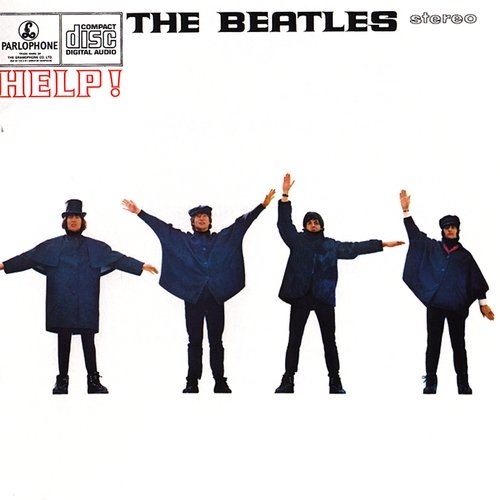
Help (1965)

1.Help!
2.The Night Before
3.You've Got To Hide Your Love Away
4.I Need You
5.Another Girl
6.You're Gonna Lose That Girl
7.Ticket To Ride
8.Act Naturally
9.It's Only Love
10.You Like Me Too Much
11.Tell Me What You See
12.I've Just Seen A Face
13.Yesterday
14.Dizzy Miss Lizzie
By the summer of 1965, the Beatles were no longer merely a pop group—they were a global institution. With this came new pressures, not least of which was the demand for another feature film, a task they fulfilled with Help!, a whimsical if narratively hollow spy spoof loosely inspired by James Bond. While the film's plot—centered around Ringo and a sacrificial ring—barely holds together, it provides a vibrant backdrop for what was, in effect, a new chapter in the Beatles’ creative evolution.
The accompanying album, their fifth UK studio release, reflects this transitional moment with remarkable clarity. Although still firmly within the framework of Beatlemania, Help! marks the beginnings of what would become their exploratory phase. Acoustic textures dominate large sections of the record, suggesting a softening of the group’s sonic palette, even as their command of the pop form remained undiminished.
The title track, Help!, opens the album with what initially sounds like a typical upbeat Lennon composition, but beneath its bright tempo lies a striking vulnerability—one of Lennon’s earliest forays into emotional transparency, and arguably the first indication that the Beatles’ lyrical scope was expanding beyond the requirements of commercial singles.
Elsewhere, the acoustic-driven You've Got to Hide Your Love Away is unabashedly Dylanesque—complete with flute—and shows Lennon further distancing himself from standard pop tropes. McCartney's Yesterday, famously recorded without the other Beatles, is the most covered song in the history of modern music. It introduced a classical sensibility to the band's catalogue and remains a towering example of emotional minimalism. The album is not without its energetic highs. Ticket to Ride—a significant step forward rhythmically and structurally—features a proto-heavy guitar sound and a drum pattern from Starr that verges on experimental. It also stands as the first Beatles single to breach the three-minute mark, a small but telling sign of the group pushing against formal constraints.
Other standouts include McCartney’s I’ve Just Seen a Face, a brisk acoustic shuffle with clear folk and rockabilly undertones, and It’s Only Love, a track Lennon himself dismissed but which, in retrospect, serves as a gentle showcase for the group’s increasingly deft use of harmony and arrangement. Not every inclusion is a triumph. Dizzy Miss Lizzy, a Larry Williams cover, closes the album with more force than finesse, and its placement feels jarring amidst otherwise refined material. Ringo contributes his usual light relief with Act Naturally, a competent, if predictable, country pastiche that suits his affable persona.
Structurally, the UK release contains fourteen tracks, all Beatles performances. The U.S. edition—originally released with only the seven film songs and a collection of instrumental score pieces—fails to present the album as a coherent artistic statement. Thankfully, the canonical version today is the British configuration, which better reflects the band’s evolving creative ambition.
In retrospect, Help! represents the closing chapter of the Beatles’ first era. From this point forward, studio craft would eclipse stagecraft, and thematic ambition would soon replace formula. While not as unified or groundbreaking as the albums that followed, Help! is the first signpost on the road to Rubber Soul, Revolver, and beyond. It remains, in parts, exuberant, sophisticated, and quietly revolutionary.